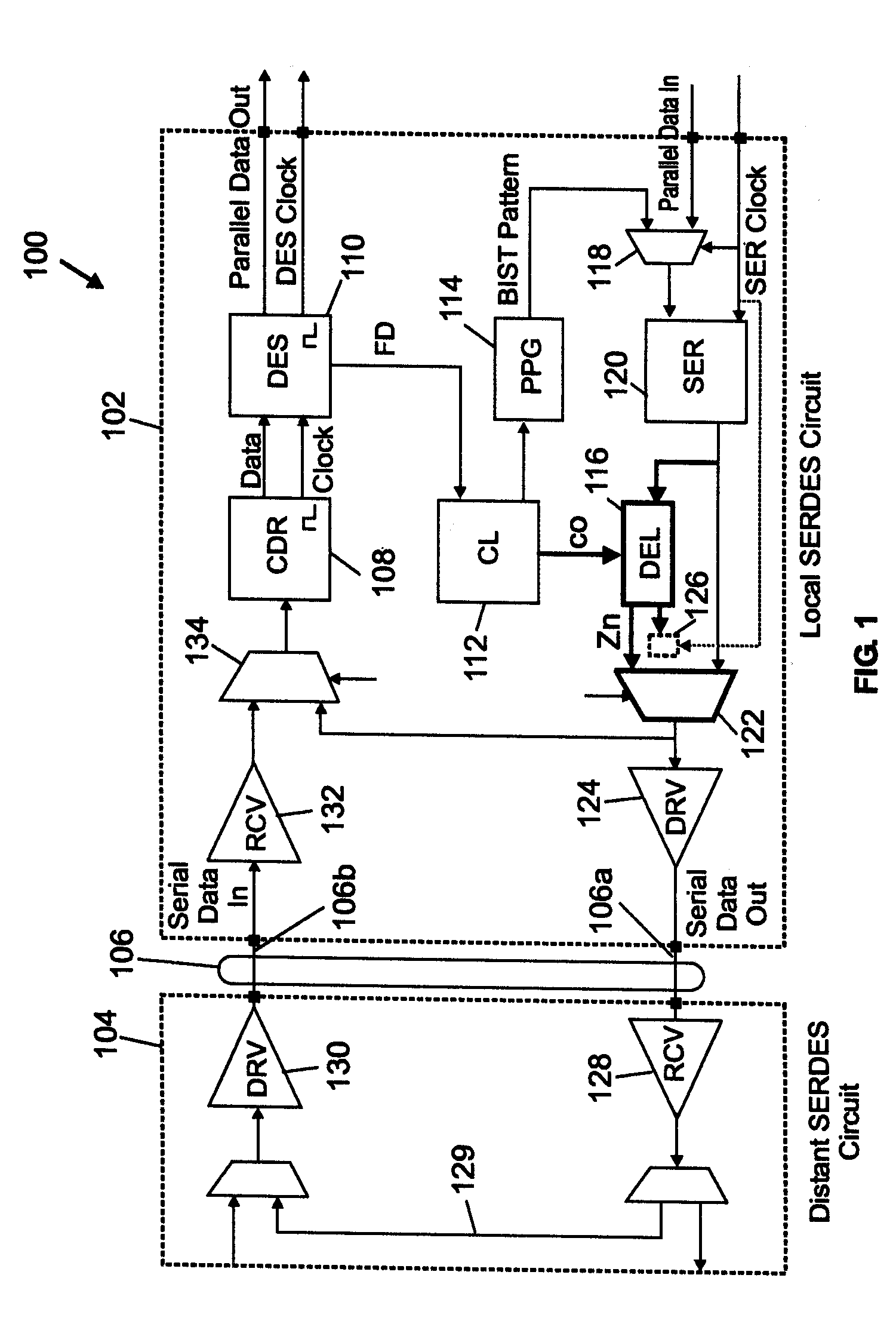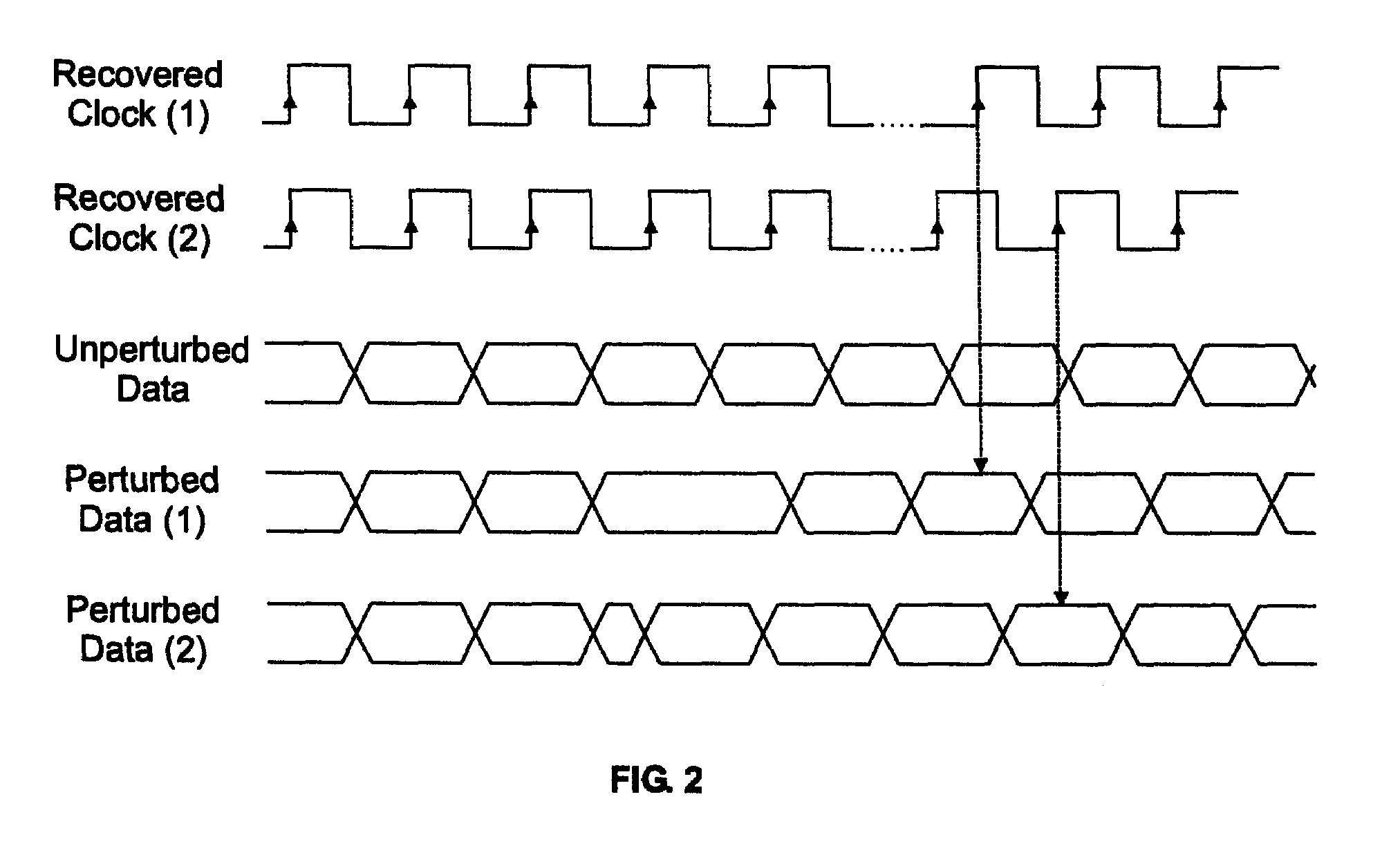Serializer/deserializer circuit for jitter sensitivity characterization
a serializer and jitter sensitivity technology, applied in the field of serial communication data transfer, can solve the problems of exacerbated situation, limited ability of standard characterization test equipment to generate high frequency jitter data, and general impracticality of evaluating in-situ quality
- Summary
- Abstract
- Description
- Claims
- Application Information
AI Technical Summary
Benefits of technology
Problems solved by technology
Method used
Image
Examples
Embodiment Construction
[0030]A telecommunication system 100 includes a local SERDES circuit 102, improved according to the present invention, and a distant SERDES circuit 104 is shown in FIG. 1. SERDES circuits 102 and 104 are connected by two physical transmission lines forming the link represented by bus 106 that transports the serial data streams for data exchange between the two components. In essence, the SERDES circuit 102 of the present invention represents an improvement over prior art SERDES circuits having built in self-test (BIST) capabilities. See for example FIG. 2 of United States Patent Application Publication No. 2001 / 016929 A1 noted above.
[0031]The receiving side of the local SERDES circuit 102 is constructed around the clock and data recovery (CDR) circuit 108 (receives the serial data from the distant SERDES circuit 104) and the DES circuit 110 which are connected in series. The CDR circuit 108 generates recovered serial data and clock. The DES circuit 110 transforms these recovered ser...
PUM
| Property | Measurement | Unit |
|---|---|---|
| time | aaaaa | aaaaa |
| frequency | aaaaa | aaaaa |
| data transmission rate | aaaaa | aaaaa |
Abstract
Description
Claims
Application Information
 Login to View More
Login to View More - R&D
- Intellectual Property
- Life Sciences
- Materials
- Tech Scout
- Unparalleled Data Quality
- Higher Quality Content
- 60% Fewer Hallucinations
Browse by: Latest US Patents, China's latest patents, Technical Efficacy Thesaurus, Application Domain, Technology Topic, Popular Technical Reports.
© 2025 PatSnap. All rights reserved.Legal|Privacy policy|Modern Slavery Act Transparency Statement|Sitemap|About US| Contact US: help@patsnap.com



